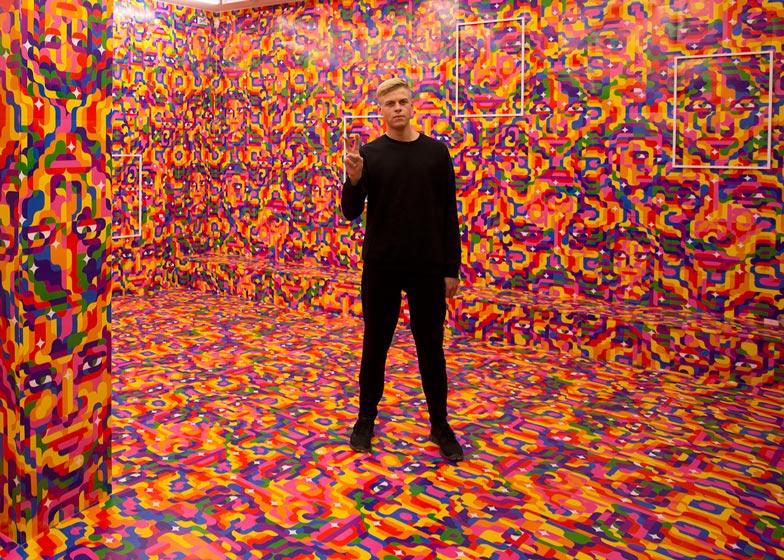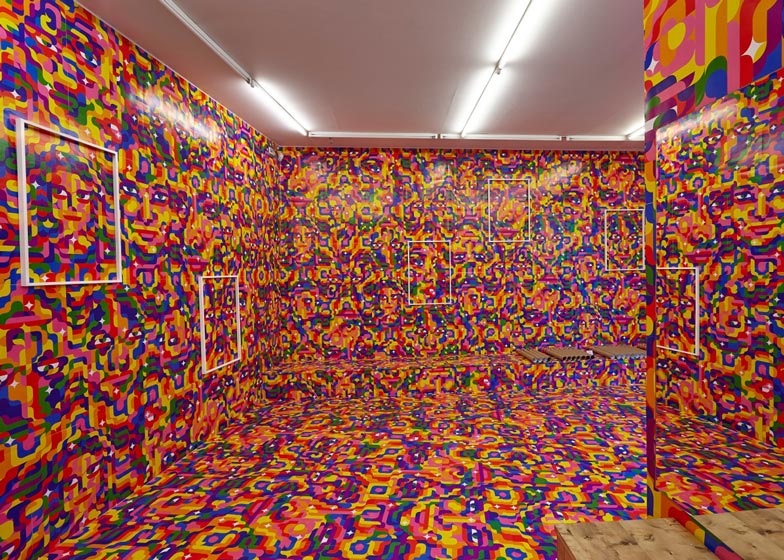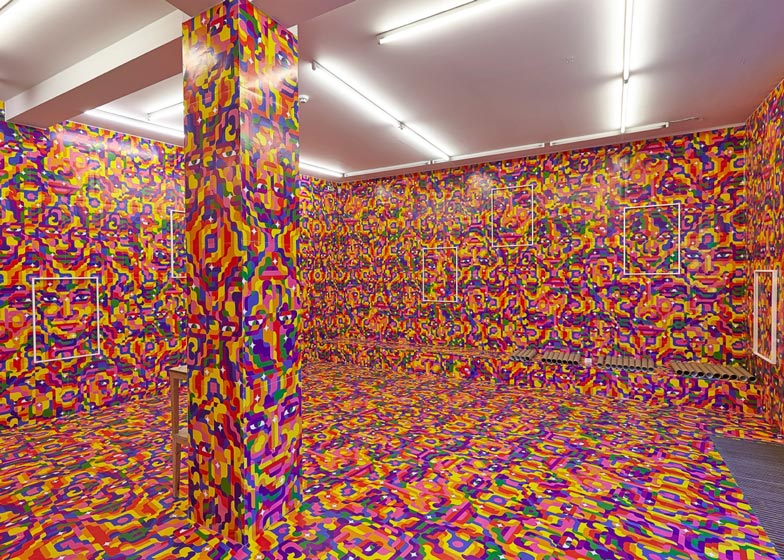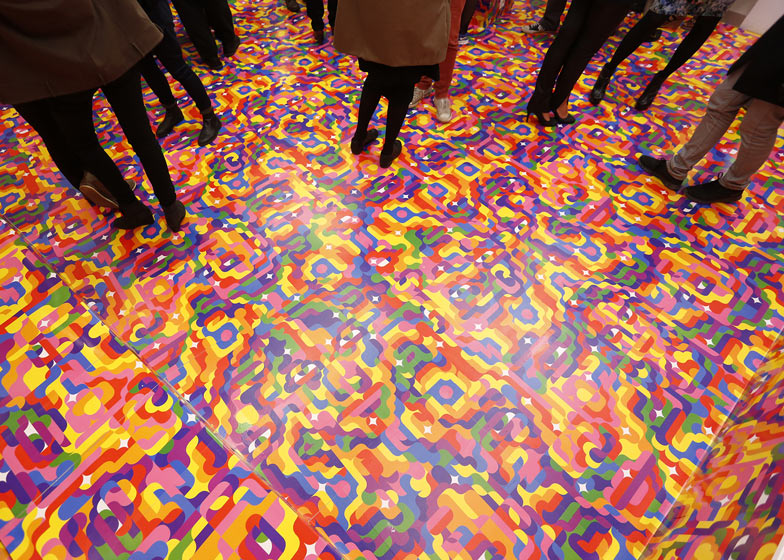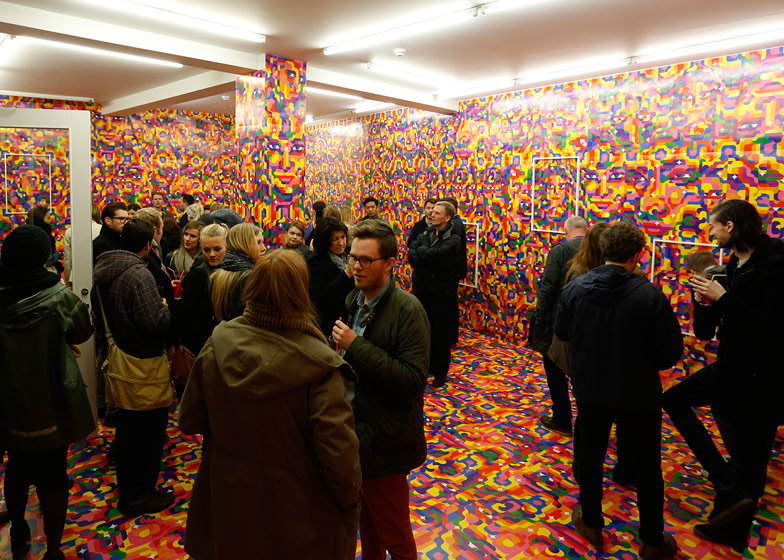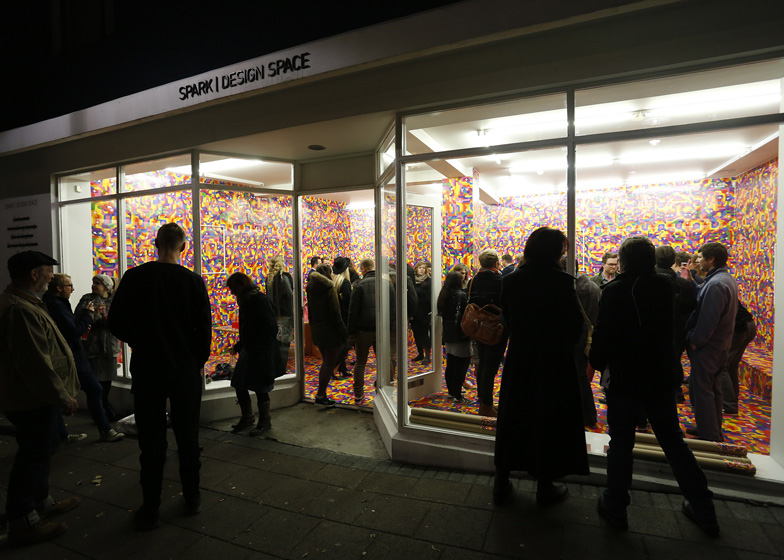Images of fantasy goddesses are hidden in brightly-coloured graphics on the walls, floor and ceiling of this exhibition space in Reykjavík, Iceland (+ slideshow).
Berlin-based Icelandic graphic designer Siggi Eggertsson created a set of eight posters that fit together in different ways to form a seamless, patterned wallpaper across the interior of Spark Design Space.
Eggertsson used a mixture of curved and straight lines to generate the complex pattern. "My work is all based on grids and construction of geometric shapes," Eggertsson told Dezeen.
"I normally work with warmer and less saturated colours, but for this exhibition I wanted to create something overly colourful, so I decided to use only pure CMYK colour blends," he said.
On closer inspection, the graphics merge together to form images of women or 'skvís', the Icelandic term for a young, pretty and smart girl.
"They are sort of imaginary muses, said Eggertsson. "I knew I wanted to make a system of modular posters that could connect to each other in numerous ways to create a seamless pattern, but didn’t really know what to draw."
"At first I thought about creating abstract patterns but then realised it would be more fun to draw pretty girls," he added.
The exhibition continues until 16 November.
Here's some information from the exhibition organisers:
SKVÍS at Spark Design Space
There is a special relationship between mind, sight, fine muscular movements and hands which, together with its reflection in the virtual world of digital technology, has given birth to a new species of of homo sapiens. The American science fiction writer William Gibson wanted to refer to this new-born species as "Cyber-punks".
That was 30 years ago. This species has from early childhood had an almost unbreakable bond with a keyboard, a computer screen and a mouse. The infinite virtual world seems to be a dwelling place, an extension, and a reflection of their feelings and thoughts. When this proximity reaches a certain stage they become one and the same, the virtual world and the species.
Siggi Eggertsson is an artist of this new world. He was born in 1984 and will turn 30 next year. His life has been a constant journey in the virtual world almost since birth. He has never paused to consider the ordinary. He dives deep into the basic squares which the visual presentation of the screenshot and the printed matter are based on.
If patterns were a pure geometry without reference to the biological world such as flora or fauna, they were arabic or eastern. Patterns with a reference to flora or fauna, plants and birds, originated in Rome. A combination of the abstract and the real are found in Indian or Chinese mandalas.
The methodology is in fact the same. Squares based on horizontal and vertical lines. The density of the squares, or the resolution as we now call it, is the only thing that decides whether we can read into the pattern a representation of something real. The highest resolution digital photograph can be blown up until it ends up like squares on a ruled page without a reference to anything real. Siggi also uses a quarter of a circle pasted into a square – that is what his personal style is based on.
The exhibition consists of eight modular posters. The nature of the pattern is almost always spiritual - a suggestion of divine beauty. This beauty of infinity is always present in Siggi's work. This may be related to methods for expanding ones mind, whether by use of substances or meditation.
That world has goddesses floating about, as can be seen in Siggi Eggertsson's representation. He invites us on a guided journey as someone who has seen a world none of us have seen. This is a journey into infinity where we fleetingly catch a glimpse of the goddesses and make the briefest of eye contact.

